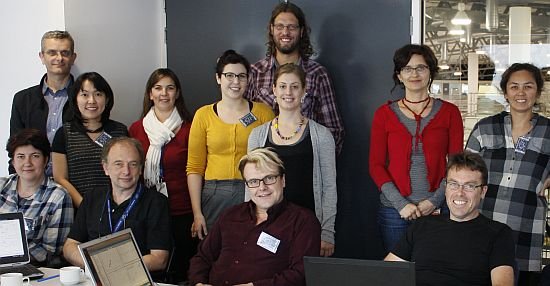28 June 2013
Shining light through a patient’s skin to detect diseases and parasites sounds like something from a sci-fi movie, but it’s actually a serious research project.
Light, together with artificial intelligence systems that deliver fast, accurate analysis, has the potential to reshape the diagnosis and treatment of disease. Dr Bayden Wood from Monash University School of Chemistry is focusing on new ways to detect and analyse malaria, heart disease and cancer by detecting molecular vibrations. The Australian Research Council has acknowledged the significance of this major project by awarding Bayden a Future Fellowship to support his work.
“It’s all based on using light as a diagnostic tool in medicine,” Bayden said. “We’re combining cutting-edge technology and very high-powered computing systems. The diagnosis ultimately is made by a machine, so it’s non-subjective.”
Working with national and international collaborators, Bayden is developing the use of infrared and laser light, and advanced spectroscopic instrumentation including the infrared beamline at the Australian Synchrotron, to detect the early presence of disease.
 Malaria, for example, can be detected in blood at the initial stages of the parasite’s lifecycle by the way it absorbs and scatters light. Bayden wants to use only tiny amounts of blood for analysis and has been developing a variety of infrared- and Raman-based spectroscopic systems for the task. One Raman-based method uses soundwaves from an acoustic device to levitate about one million cells. The cells are then probed with a red laser and the spectra recorded. This sci-fi-sounding approach has the very practical benefit of providing a container-less environment in which lasers can scan the entire cell, with potential going beyond malaria diagnosis.
Malaria, for example, can be detected in blood at the initial stages of the parasite’s lifecycle by the way it absorbs and scatters light. Bayden wants to use only tiny amounts of blood for analysis and has been developing a variety of infrared- and Raman-based spectroscopic systems for the task. One Raman-based method uses soundwaves from an acoustic device to levitate about one million cells. The cells are then probed with a red laser and the spectra recorded. This sci-fi-sounding approach has the very practical benefit of providing a container-less environment in which lasers can scan the entire cell, with potential going beyond malaria diagnosis.
Photo: Bayden Wood (seated, third from left) with IR beamline team members and participants at a recent IR beamline workshop.
An alternative approach employs infrared light to diagnose malaria, making use of the IR beamline at the Synchrotron. In a world-first, Bayden and his team applied synchrotron IR light to identify different stages of the malaria parasite’s lifecycle at the single cell level. The spectra showed distinct and highly reproducible differences between all stages of the parasite’s lifecycle, based on specific lipid marker bands.
Another method, reminiscent of the tricorder used by Dr Leonard ‘Bones’ McCoy, chief medical officer on the Starship Enterprise in the long-running Star Trek franchise, would involve passing a hand-held Raman spectrometer over someone’s skin.
“We would essentially be using light to go through the skin to diagnose the parasites,” Bayden said.
By eliminating the need for blood samples, this would make diagnosing children easier, and reduce risks for health workers in areas with high rates of AIDS. Although such an approach could not be used for most cancers or heart disease, where tissue samples are needed, spectroscopy offers many potential advantages. It is so sensitive to chemical cell changes that it can detect the cell changes that precede visible indications of cancer, allowing for earlier diagnosis.
Technology that gives resolution at the single-cell level could help achieve greater accuracy in grading tumours and establishing surgical boundaries. Light could also potentially be used to determine the status of atherosclerotic plaques in valves and arteries, providing better information about when to operate on heart-disease patients.
Bayden’s research also involves developing the complex algorithms and huge databases necessary for high-powered artificial intelligence systems to recognise the spectral patterns that indicate disease. Results fed into this system for accurate analysis would avoid such problems as human fatigue. The network is being designed to improve with time.
“New data adds to the previous data, so the system is self-evolving,” Bayden said. “It’s all high-speed, rapid automated diagnosis removed from human subjectivity, and can be done anywhere in the world.”
Commercialisation of Bayden’s ideas will depend on the outcomes of further research, and clinical studies.
